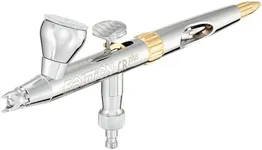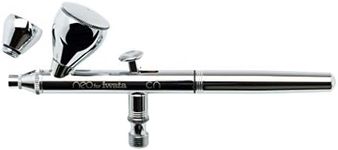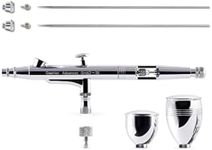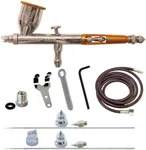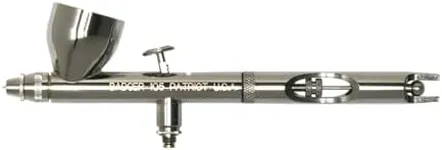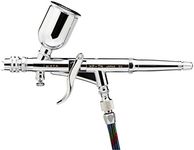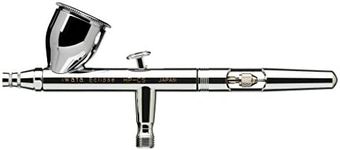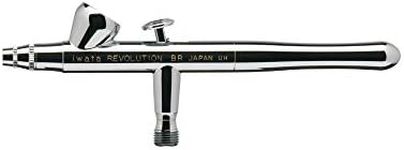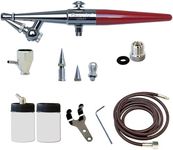Buying Guide for the Best Airbrush Guns
Choosing the right airbrush gun can make a big difference in your painting projects, whether you're working on models, crafts, makeup, or automotive detailing. The best approach is to think about what you'll be using the airbrush for most often, as different types and features suit different tasks. Understanding the main specifications will help you match an airbrush gun to your needs, ensuring you get smooth, consistent results and enjoy the process.Type (Single Action vs. Dual Action)The type of airbrush refers to how you control the flow of air and paint. Single action airbrushes let you control only the airflow with the trigger, while the paint flow is set separately. Dual action airbrushes allow you to control both air and paint flow with the same trigger, giving you more precision and flexibility. If you're a beginner or need to cover large areas quickly, single action might be easier to use. If you want more control for detailed work, dual action is usually the better choice.
Feed Type (Gravity, Siphon, Side)Feed type describes how paint enters the airbrush. Gravity feed airbrushes have a cup on top and use gravity to pull paint into the mixing chamber, which works well at lower air pressures and is great for fine detail. Siphon feed airbrushes have a bottle or jar underneath and use suction to draw paint up, making them better for larger projects or frequent color changes. Side feed airbrushes have a cup on the side and offer a balance between the two. Choose gravity feed for detail and control, siphon feed for volume and versatility, and side feed if you want flexibility in how you hold the airbrush.
Nozzle/Needle SizeThe nozzle and needle size determine how fine or broad your spray pattern will be. Smaller sizes (around 0.2-0.3 mm) are best for fine lines and detail work, while larger sizes (0.4 mm and above) are better for covering bigger areas or spraying thicker paints. Think about the kind of work you’ll do most: choose a smaller size for miniatures or fine art, and a larger size for backgrounds, base coats, or crafts.
Compressor CompatibilityAirbrush guns need a source of compressed air, so it's important to make sure your airbrush is compatible with your compressor in terms of air pressure and fittings. Some airbrushes work best at lower pressures, which is ideal for detail work, while others need higher pressure for broader coverage. Check the recommended pressure range for the airbrush and make sure your compressor can provide it. If you already have a compressor, look for an airbrush that matches its capabilities.
Ease of CleaningAirbrushes need to be cleaned regularly to prevent clogs and keep them working smoothly. Some designs are easier to take apart and clean than others. If you plan to switch colors often or use paints that dry quickly, look for an airbrush with simple disassembly and minimal small parts. This will save you time and frustration, especially if you’re new to airbrushing.
Build Quality and MaterialsThe materials used in the airbrush affect its durability and how comfortable it is to use. Metal bodies are more durable and feel solid, while plastic parts can make the airbrush lighter but may not last as long. If you plan to use your airbrush frequently, a well-built, all-metal model will likely serve you better in the long run. For occasional use, lighter or mixed-material models can be sufficient.
